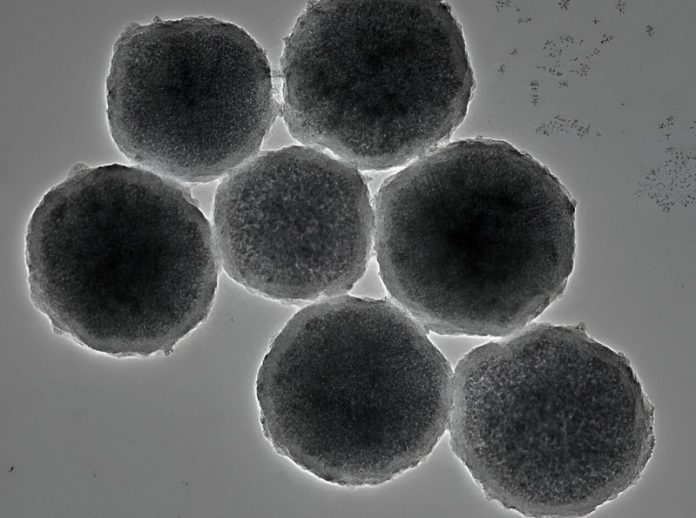
Researchers have developed tiny robots that could one day help treat dangerous brain bleeds caused by aneurysms.
These nanoscale robots offer a promising new way to treat brain aneurysms, which cause about 500,000 deaths worldwide every year.
Aneurysms occur when a blood-filled bulge forms on an artery in the brain, and if it ruptures, it can lead to fatal bleeds, strokes, or permanent disability.
This new technology could lead to more precise and lower-risk treatments for brain aneurysms, offering hope for safer solutions to a life-threatening condition.
The international research team, including scientists from the University of Edinburgh, created tiny magnetic nanorobots that are about 1/20th the size of a human red blood cell.
These robots are covered in a protective layer that contains a drug used to clot blood. The coating melts at specific temperatures, allowing the drug to be released exactly when and where it’s needed.
The team, whose findings were published in the journal Small, injected these nanobots into an artery during lab tests.
Using magnets and medical imaging, the scientists guided the nanobots as a swarm to the site of an aneurysm.
Once the nanobots reached the aneurysm, they were heated to melt their coating and release the blood-clotting drug. This drug then worked to block the aneurysm and stop any bleeding into the brain.
The research team, co-led by clinicians from Shanghai Sixth People’s Hospital in China, tested the nanobots in lab models of aneurysms and in a few rabbits.
The results showed that the nanobots could successfully deliver and release drugs at the precise location of an aneurysm without leaking into the bloodstream. This is an important step toward proving that this technology is both safe and effective.
These promising lab results suggest that the next step could be testing the nanobots in human trials.
Currently, treating a brain aneurysm involves threading a tiny tube, called a microcatheter, through the blood vessels. Doctors then insert metal coils or a mesh stent to block the aneurysm. This process is complex and risky, as it requires careful navigation of small, delicate blood vessels in the brain, which can take hours in surgery.
The new nanobot technique could simplify this process, reducing the need for metal implants and the risks associated with blood-thinning drugs, which can cause bleeding and other side effects. Larger brain aneurysms, which are especially difficult to treat with current methods, could also be more easily managed with this new technology.
Dr. Qi Zhou, one of the study’s leaders, believes that nanorobots could open new possibilities for medicine, allowing doctors to perform surgical repairs with fewer risks and deliver drugs with pinpoint accuracy.
“Our study is an important step toward bringing these technologies closer to treating critical medical conditions in a clinical setting,” he said.
This exciting advancement brings us one step closer to using nanorobots to treat brain bleeds and other medical conditions in the future.
If you care about brain health, please read studies about Vitamin B9 deficiency linked to higher dementia risk, and cranberries could help boost memory.
For more information about brain health, please see recent studies about heartburn drugs that could increase risk of dementia, and results showing this MIND diet may protect your cognitive function, prevent dementia.
Source: University of Edinburgh.



